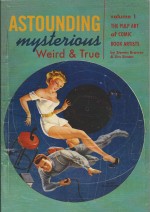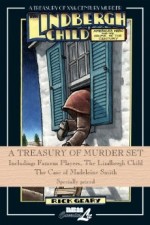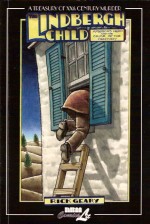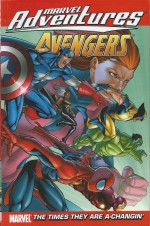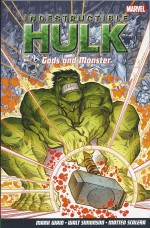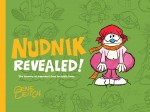
By Gene Deitch (Fantagraphics Books)
ISBN: 978-1-60699-651-5
Kim Deitch has been one of the leading lights of America’s Comix Underground since its earliest days. He probably got his artistic acumen, narrative know-how and skewed raconteur’s view from his dad…
Eugene Merril “Gene†Deitch was born in 1924 and began his astounding career as a graphic designer and art director before eventually moving into animation. Over a 65-year career working as producer, scripter, artist, designer and Director for UPA/Columbia Pictures, MGM, Terrytoons/20th Century Fox, King Features and Paramount Pictures, he created cartoons for both movie audiences and television consumption.
In 1961 his cartoon feature of Jules Feiffer’s Munro won the Oscar® for Animated Short Film, and he numbers Tom Terrific, Tom and Jerry, Popeye and Krazy Kat amongst his other major successes. Deitch directed Alice of Wonderland in Paris, adapted the animated feature of Maurice Sendak’s Where the Wild Things Are and is credited with the first ever Tolkien film adaptation with The Hobbit in 1966.
Gene Deitch has resided in Prague for decades where he established a long and fruitful working relationship with Krátký Film s.r.o. studios. This partnership led, in 1964-1965, to a uniquely personal and brilliant run of movie cartoon shorts starring the latest in a shabby yet unbroken line of good-natured, ingenuously bumbling, impoverished cinematic victims of cruel circumstance.
The very first Nudnik cartoon garnered Deitch another Academy Award® nomination and led to the commission of 11 more shorts starring the luckless loafer, conceived and mapped out by Deitch to be constructed by his Iron Curtain cousins …and delivered just as the American tradition of preceding main movie blockbusters with brief cartoons was ending….
Now with those lost classics restored and collected on a commemorative DVD, Deitch has also compiled a glorious oversized (310 x 236mm) full-colour hardback compendium detailing the history and genesis of Nudnik as an accompaniment.
Dedicated to and enamoured of the hallowed concept of the lonely loser, Deitch famously got the idea for his favourite creation after a piece of office machinery tried to kill him. From there the concept of a down-and-out hobo who was a magnet for ever-increasing disaster just seemed to gel… Â
Liberally illustrated throughout with original art and documents scrupulous hoarded by Deitch, the disclosures begin in the introductory ‘Here’s Nudnik’ after which the physical genesis of the character is revealed in ‘Nudnik, Master of Failure’…
In ‘What’s a Nudnik?’, Deitch traces the development of his ultimate baggy-pants clown, revealing his personal empathy with his creation, after which ‘The Nudnik Plot’ examines the narrative thrust of the two brief series.
Historical antecedents, poster art and some of the merchandising intended to supplement the character launch all contribute to the story of ‘The Nudnik Look’ before the real meat of this tome begins with ‘Production Scrapbook – Capturing Ideas on Paper’.
This vast collection of utterly fascinating development sketches, preparatory roughs, scene layout drawings, models sheets, animation tests, character designs, episode models, gags, pictorial story snippets and even a complete 1967 “flip-book†adventure (‘The Cut Finger Fumble’ produced for the Montreal World’s Fair) plus more merchandise prototypes all show just how much work goes into making animation.
Then ‘Film Setups – Some actual camera setups, cels, and backgrounds’ reproduces many actual finished scenes from the cartoons whilst ‘Gags – Nudnik gag sketches, some of which were produced as 30-second “blackout†gag films’ reprints whole raw story sequences which show just how similar cartons and comics strips truly are.
At the time, Deitch was still learning how to work with his Czech team and thus his visual instructions were often excessively detailed.
The next section fills out the book with a magical treat for fans and students of the medium: three complete production storyboards, exactly as the actual animators received them and which they used to turn Deitch’s script, ideas and drawings into six minutes of slapstick action and outré sound effects.
The actual tales are all 18 to 20 pages of nine frames each, ‘Home Sweet Nudnik’ (episode 7), ‘Welcome Nudnik’ (episode 3) and ‘Good Neighbor Nudnik’ (episode 11), and work perfectly as comics even as they reveal the secret of animation magic…
This terrific tome then closes with additional features ‘To Russia With Love’ featuring a modern performer celebrating the cartoon clown’s shtick, a salutary example of the unwanted influence of Studio bosses in ‘Peeing in the Soup’ and a warm plug for that aforementioned DVD collection in ‘Nudnik Lives Again’…
Long regarded as a lost masterpiece of the art form, Nudnik Revealed! is a wonderful visual memoir which offers stunning insights into the history of cartoon creation and the mind of a brilliantly imaginative creative force.
Nudnik Revealed! is © 2013 Fantagraphics Books Inc. All contents © 2013 Gene Deitch. All rights reserved.

